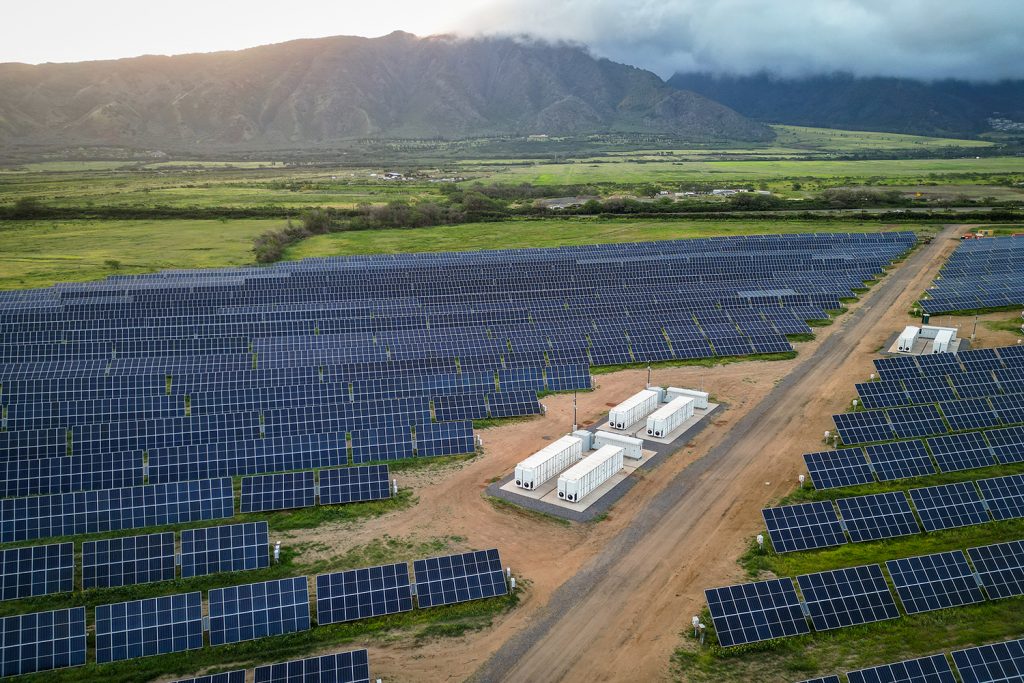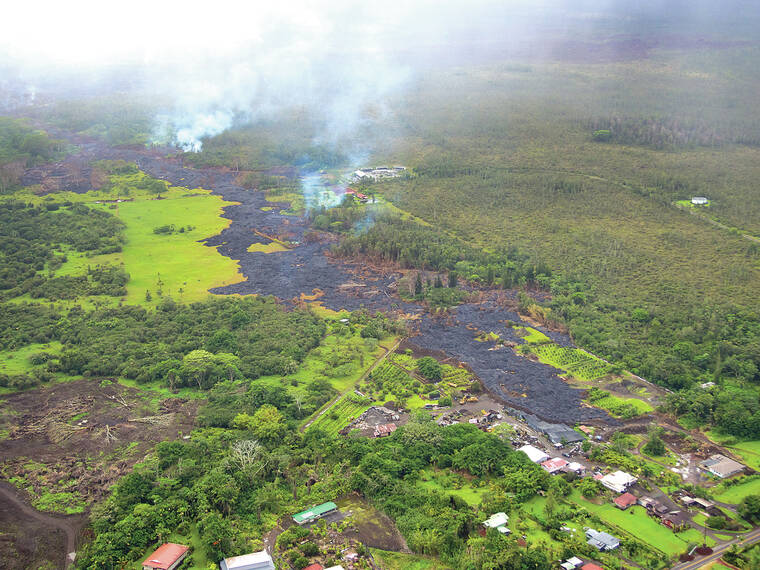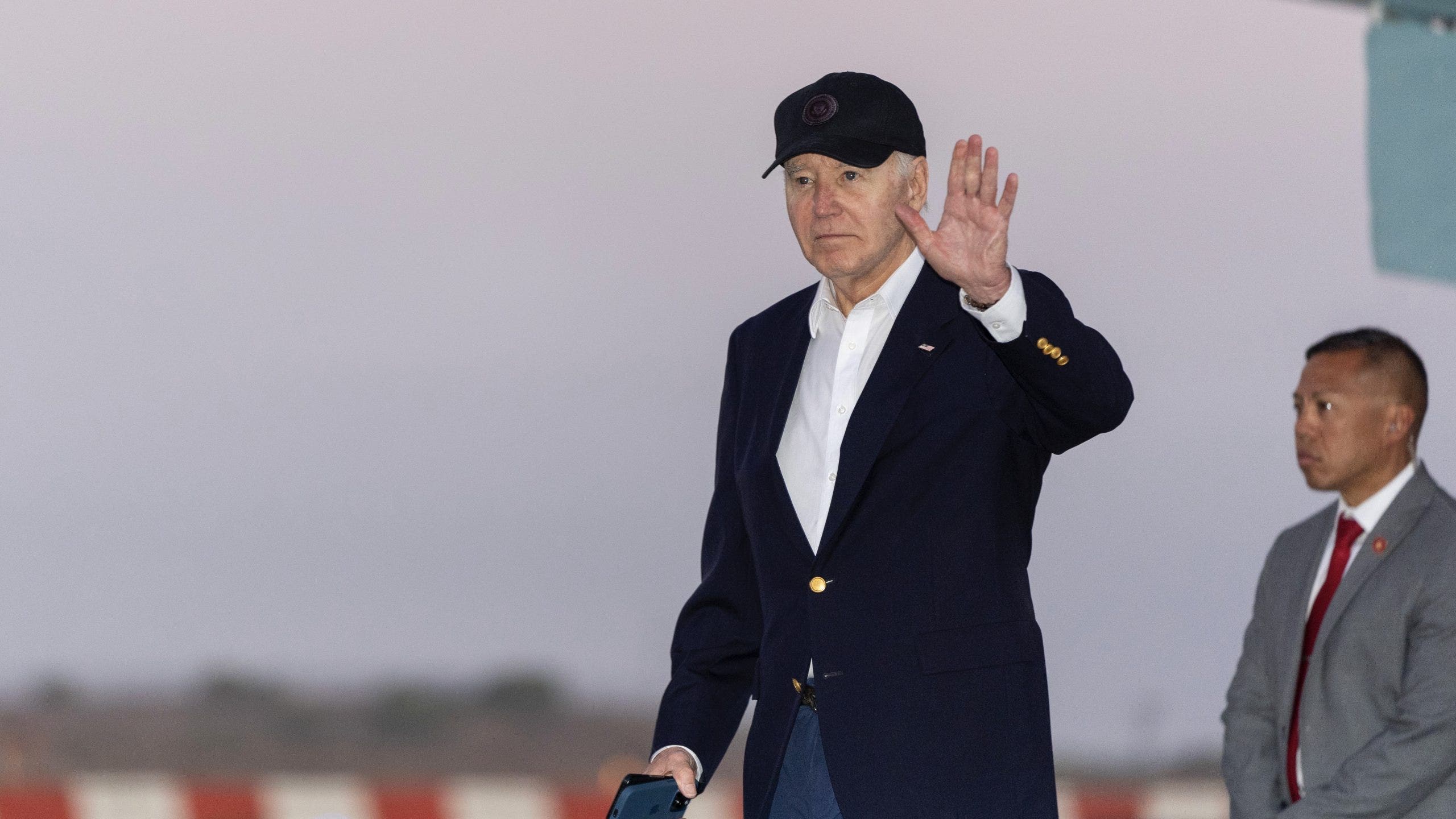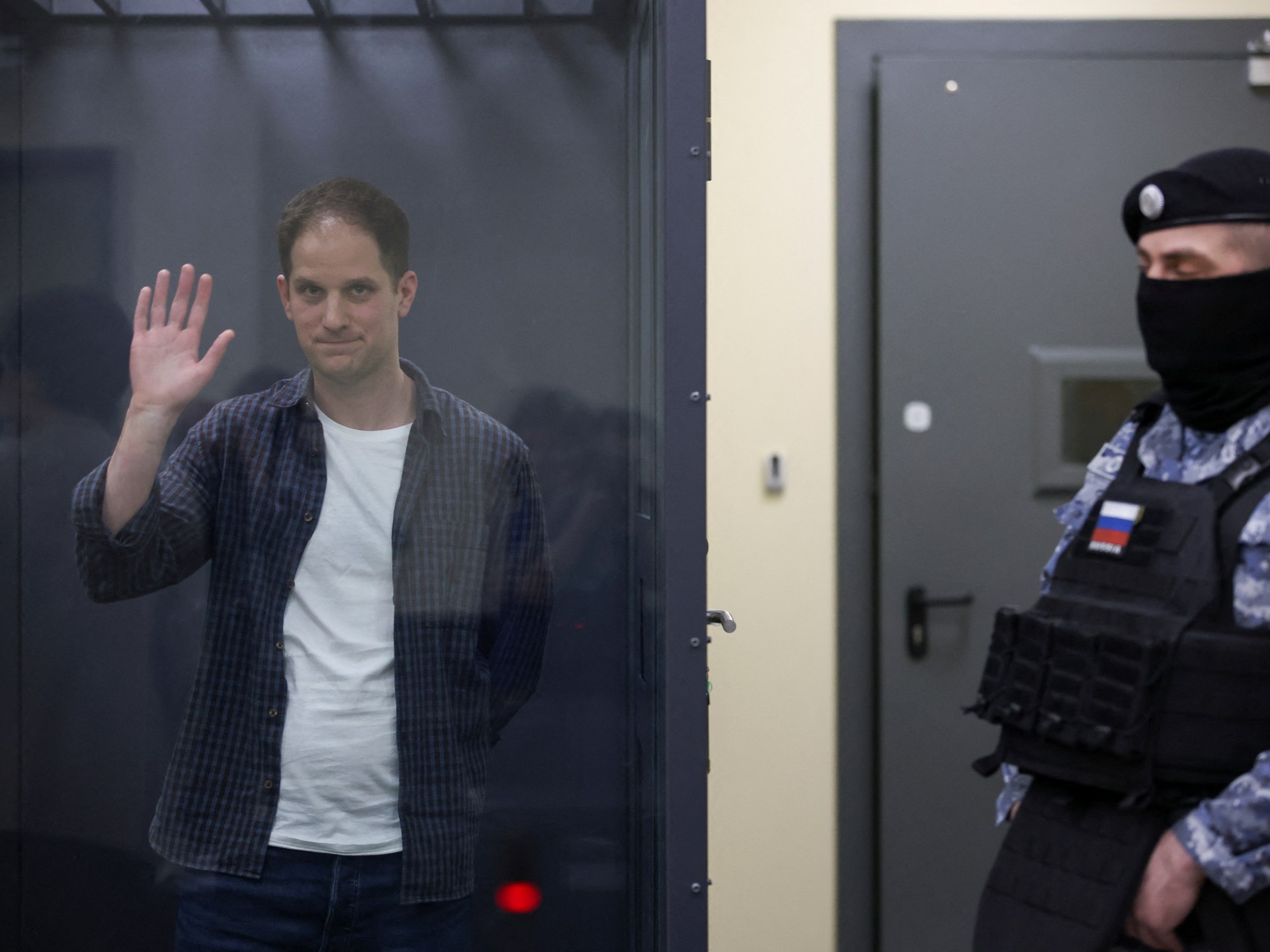Hawaii
After retirement announcement, state adjutant general Hara reflects on 40-year career

HONOLULU (HawaiiNewsNow) – Hawaii adjutant general Maj. Gen. Ken Hara has led the state’s emergency management agency for five years, capping a 40-year military career with three combat deployments.
In his first one-on-one interview since he announced he would retire on Nov. 1, Hara sat down with Hawaii News Now to talk about why he joined — and what he would have done differently over the years.
“I’ve been pretty much an infantry guy watching the helicopters fly by and seeing like, Oh, that was a big mistake. I should have stayed in aviation,” he said, reflecting on what he called one of his regrets. “I still wish I was flying.”
“I tried a few times [to get back], but just things didn’t work out. It was like this was my destiny and and ended up being an infantry guy most of my career,” he said.
Hara says he is a man of faith, which had a huge impact on his career.
“How else am I successful as like no skill says not the smartest guy in the room. But you know, I’ve been really blessed and had opportunities that came at the perfect time. Literally all of the stars aligned on how I got my college education and some really, really critical military assignments is pretty, pretty amazing,” Hara said.
The Hilo native graduated from Waiakea High School and enlisted in the Hawaii National Guard, as his father and uncle did. His older brothers also joined, and the Hara military legacy was well-known and respected.
“Initially, I think it was great having older brothers and a father and an uncle that served so many mentors I could go to,” he said. “Oftentimes, it was reverse nepotism, like you have to do better and the standards are higher, just because the last name was Hara.”
“My son swore in in the National Guard that definitely was the proudest moment. The next generation in line following the Hara legacy. So my son is a first lieutenant now in the Army National Guard,” he said.
Hara also talked about how his three combat deployments prepared him for his career, transitioning from infantry to politics, from war on the ground to the halls of politics. “
“Three deployments, the first one to Baghdad, Iraq, second in Kuwait, and a third one in Kandahar, Afghanistan, all three really, really challenging and dangerous missions,” he said.
“The mission kind of shifted from that combat operations to more domestic and Hawaii focused disaster response. So I got a lot of experience in that, you know, not just the war fight.”
“What’s tough, what no one can prepare for is dealing with the politics that I dread during the legislative session, but I can tell you that I am I have a great relationship with every single one of the legislators and they treat me with dignity and respect,” he said.
As Hawaii adjutant general, he oversees Hawaii’s Emergency Management Agency and National Guard, and has led the state through back-to-back natural disasters, from hurricanes to eruptions, the COVID-19 pandemic and even the false missile alert.
Looking back, he says he says he’s satisfied with how HIEMA handled the pandemic.
“I don’t think there’s anything, I would have changed, especially for me and what we did. We didn’t know what we didn’t know, we learned along the way. And as we learned, we adjusted,” he said.
“You make decisions, a lot of people aren’t going to be happy about it. But we made decisions based on the information understanding we had at the time,” he said.
“The biggest lesson is, if you’re going to be successful, it’s about the relationships. And try to build that relationship and hopefully forge that into trust before the disaster,” he added.
Hara concluded: “I’m proud of my career. I’m proud what I’ve accomplished. I’m proud of my family and the Hara legacy. But I’m human. I look back because I could have had an easier life. My class, my close classmates, they’re super successful. Living the life,” he said with a laugh.
Copyright 2024 Hawaii News Now. All rights reserved.

Hawaii
Hawaii’s largest solar-plus-storage facility now operational

The 60 MW Kūihelani solar-plus-storage facility will generate enough electricity for 27,000 homes, with a 240 MWh battery energy storage system.
From pv magazine USA
Hawaii has the highest average electricity price of any state at $0.43.93 per kWh, nearly triple the U.S. average, yet this project will cut that cost for many residents. Developer AES Hawaii projects that the Kūihelani Solar-plus-Storage facility will generate enough electricity for 15% of Maui’s needs at just $0.08 per kWh.
“Maui residents will soon be seeing the benefit of Kuihelani in their electric bills and the reassurance of knowing they will have reliable electrical power for their homes and businesses,” said Maui Mayor Victorino.
Islands that are not covering their energy needs with renewables are beholden to imported fossil fuels. The energy generated by this facility will offset the need to import an estimated 2 million barrels of oil.
Situated on 450 acres in central Maui, between Kūihelani Highway and Maui Veterans Highway, the project supports the state’s goal of 100% renewable energy and decarbonization targets by 2045. AES Hawaii broke ground for construction less than two years ago, and as with most large-scale solar projects, the company sought input from the community before construction. As a result, AES Hawaii modified its plans.
“We reduced the size of the project site by 35%, minimizing the project’s environmental footprint, while maximizing the usage of the available land in a responsible manner,” said Sandra Larsen, Hawaii market business leader for AES.
Hawaiian Electric is the offtaker of the electricity, having signed a 25-year power purchase agreement with AES Hawaii.
Nearly 300 jobs were supported during the construction of Kūihelani Solar-plus-Storage and generated approximately $68 million for Maui’s economy, according to AES Hawaii. In addition, the project area is also designed for agricultural use.
AES Hawaii has more than 300 MW of renewable energy in construction or operational, enough to power 120,000 homes statewide. The company estimates that this is the equivalent of eliminating more than 175,000 metric tons of carbon emissions and more than 15 million barrels of oil consumption throughout project lifecycles.
This content is protected by copyright and may not be reused. If you want to cooperate with us and would like to reuse some of our content, please contact: editors@pv-magazine.com.
Hawaii
Miss Hawaii U.S. International Melody Higa heading to Florida to compete for the National Crown

We recognize you are attempting to access this website from a country belonging to the European Economic Area (EEA) including the EU which
enforces the General Data Protection Regulation (GDPR) and therefore access cannot be granted at this time.
For any issues, contact news@kitv.com or call 808-535-0400 .
Hawaii
Volcano Watch: A decade later, remembering the Pahoa lava flow crisis

Over the past few years, eruptions of Kilauea volcano on the Island of Hawaii have happened in remote regions and lava flows have not directly threatened communities. However, the approaching anniversary of a lava flow crisis a decade ago reminds us that eruptions on Kilauea have the potential to cause damage and island-wide disruption.
The 2018 lower East Rift Zone eruption of Kilauea is still fresh in many of our minds, but even before then, Kilauea lava flows entering communities was not uncommon. During the 35-year-long eruption of Pu‘u‘o‘o, on the East Rift Zone of Kilauea, lava flows caused destruction in Royal Gardens, Kalapana, and in Pahoa. Before Pu‘u‘o‘o, there were also eruptions in Kapoho Village in 1960 and on Kilauea’s lower East Rift Zone in 1955.
Ten years ago, inflation at Pu‘u‘o‘o in May and June lead to a new eruptive episode on the northeast flank of the cone. It was informally named episode 61e, but more commonly referred to as the June 27 flow in reference to the start date of that episode in 2014.
In the first few days, four fissures produced channelized flows before the eruption focused at the lowest elevation vent, where a perched pond began to form. The pond elevation continued to rise until it was about 30 meters (100 ft) higher than the vent. On July 10, pressure from the perched pond triggered the eruptive vent to shift to the next highest fissure and abandon the perched pond.
The change in eruptive vent produced a fast-moving channelized flow that traveled up to several hundred meters (yards) per day. The flow continued to the northeast until it extended across the eastern edge of the Pu‘u‘o‘o flow field by the beginning of August.
On August 18, the lava entered into a deep ground crack that directed the flow further to the northeast. After about a week the lava overflowed from the crack, before repeating this pattern at three additional and parallel ground cracks. The flow traveled roughly 5 km (3 mi) underground in these cracks to within about 1.2 km (0.7 mi) of Ka‘ohe Homesteads subdivision where the lava exited the final crack in early September.
The flow front advanced slow and steadily during the first few weeks of September, passing Ka‘ohe Homesteads to the northwest. Then from late-September to early-October, the lava flow’s rate of advance began to fluctuate as it stalled and advanced. Towards the end of October, a breakout surged through a narrow drainage and crossed Cemetery Road in Pahoa. The flow continued through the Pahoa Japanese Cemetery, through private property, and destroyed one structure, stalling only 155 m (510 ft) from Pahoa Village Road.
A large breakout on November 14 occurred roughly 6.5 km (4 mi) upslope of the flow front, and rapidly advanced along the northwest margin of the previous flow, ultimately headed towards Pahoa Marketplace and Highway 130. The flow front again stalled on December 30 after advancing to within 530 m (0.3 mi) of the marketplace. That was the furthest the lava flow advanced, but numerous breakouts just upslope continued to threaten Pahoa until early 2015.
Episode 61e, or the June 27 flow, then retreated upslope and stayed within about 8 km (5 mi) of Pu‘u‘o‘o. This episode continued until early June 2016, when inflation at Pu‘u‘o‘o culminated in two new eruptive vents on the northeast (episode 61f) and southeast (episode 61g) flanks of the cone on May 24.
The episode 61f flow was short-lived, lasting less than two weeks. However, the 61g flow remained active until the Pu‘u‘o‘o crater floor collapsed on April 30, 2018, followed by the intrusion of magma into the lower East Rift Zone and subsequent eruption.
Since then, eruptions from Kilauea have fortunately been confined within Kaluapele (Kilauea caldera) or other remote areas of Hawaii Volcanoes National Park. Currently, there are no signs of magma moving into the East Rift Zone but that will inevitably happen again someday. The Pahoa lava flow crisis and other destructive East Rift Zone eruptions are reminders that communities on or near the rift zone are vulnerable. Residents and visitors should stay informed and remember that it’s never too early consider how an eruption could impact you and your family.
Volcano
activity updates
Kilauea is not erupting. Its USGS Volcano Alert level is ADVISORY.
Kilauea erupted briefly on June 3 southwest of Kaluapele (Kilauea caldera) within the closed area of Hawaii Volcanoes National Park. Sulfur dioxide emission rates remain elevated; an emission rate of 350 tonnes per day was measured on June 10, for the combined areas of Kilauea summit and the recent eruption. Seismicity in the summit region, including the upper East Rift Zone, has been slightly elevated with about 550 events over the past week. Inflationary ground deformation has continued in the summit region. Additional pulses of seismicity and deformation could result in new eruptive episodes within the area or elsewhere on the Southwest Rift Zone.
Mauna Loa is not erupting. Its USGS Volcano Alert Level is at NORMAL.
Webcams show no signs of activity on Mauna Loa. Summit seismicity has remained at low levels over the past month. Ground deformation indicates continuing slow inflation as magma replenishes the reservoir system following the 2022 eruption. SO2 emission rates are at background levels.
One earthquake was reported felt in the Hawaiian Islands during the past week: a M3.4 earthquake 14 km (8 mi) S of Volcano at 1 km (1 mi) depth on June 6 at 12:29 p.m. HST.
HVO continues to closely monitor Kilauea and Mauna Loa.
Please visit HVO’s website for past Volcano Watch articles, Kilauea and Mauna Loa updates, volcano photos, maps, recent earthquake information, and more. Email questions to askHVO@usgs.gov.
Volcano Watch is a weekly article and activity update written by U.S. Geological Survey Hawaiian Volcano Observatory scientists and affiliates.
-

 News1 week ago
News1 week agoWould President Biden’s asylum restrictions work? It’s a short-term fix, analysts say
-

 Politics1 week ago
Politics1 week agoNewson, Dem leaders try to negotiate Prop 47 reform off California ballots, as GOP wants to let voters decide
-

 World1 week ago
World1 week agoDozens killed near Sudan’s capital as UN warns of soaring displacement
-

 News1 week ago
News1 week agoRead Justice Clarence Thomas’s Financial Disclosures for 2023
-

 World1 week ago
World1 week ago‘Bloody policies’: Bodies of 11 refugees and migrants recovered off Libya
-

 Politics1 week ago
Politics1 week agoGun group vows to 'defend' Trump's concealed carry license after conviction
-

 Politics1 week ago
Politics1 week agoShould Trump have confidence in his lawyers? Legal experts weigh in
-

 Politics6 days ago
Politics6 days agoGOP releases Jan. 6 clip of Pelosi saying 'I take responsibility' as she discussed National Guard absence




















